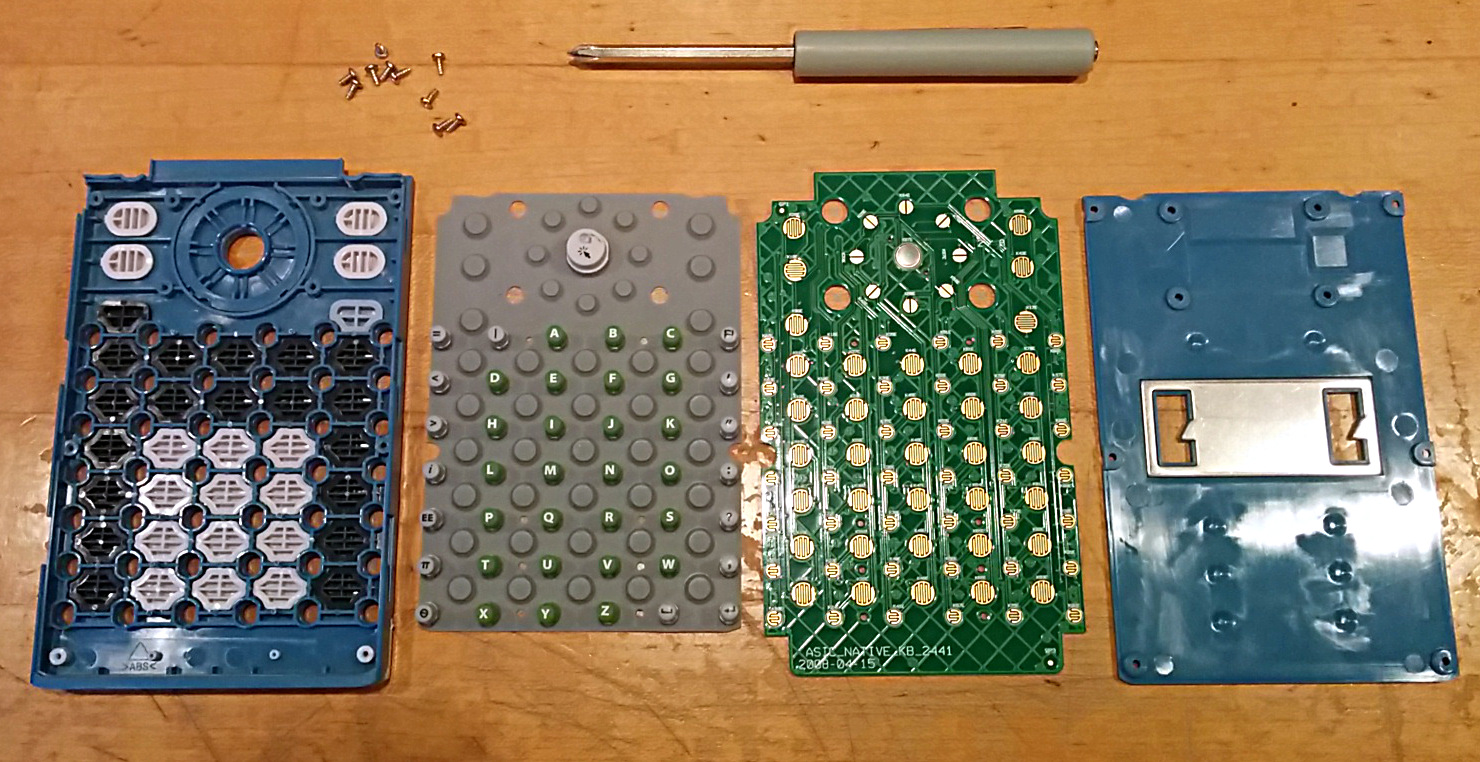I recently bought a set of 24 TI-Nspire keypads for about $5, so I sacrificed one to science. Here's what's inside the Nspire keypad: from left to right, the front cover with the larger keys, the membrane with the small alphabetic and secondary math keys, the mainboard, and the back cover. Note the metal plate that the latching mechanism latches into to hold the keypad securely. The PCB in the keypad appears to have four test points, three of which are labelled SP1-SP3 and one of which is unlabelled, but since they don't appear to connect electrically with any traces, I believe they're used for aligning the keypad PCB in some test jig. The edge connector has an intriguing number of unused pins, as willrandship mentioned. I also found it interesting that the directional pad actually has contacts and corresponding plastic pins for eight directions, rather than simply reading the combination of two cardinal directions as a diagonal.
Other than reselling these as individual keypads, and using two of them for my TI-Nspire calculators that had only TI-84 Plus keypads, what should I do with these? Is there anything I could do to use them for interesting projects? I cross-posted this information in willrandship's topic about an unfinished Nspire project, but it doesn't seem like the full pinout of the keypad has been determined yet.
Click for full-sized image

Other than reselling these as individual keypads, and using two of them for my TI-Nspire calculators that had only TI-84 Plus keypads, what should I do with these? Is there anything I could do to use them for interesting projects? I cross-posted this information in willrandship's topic about an unfinished Nspire project, but it doesn't seem like the full pinout of the keypad has been determined yet.
Click for full-sized image
















